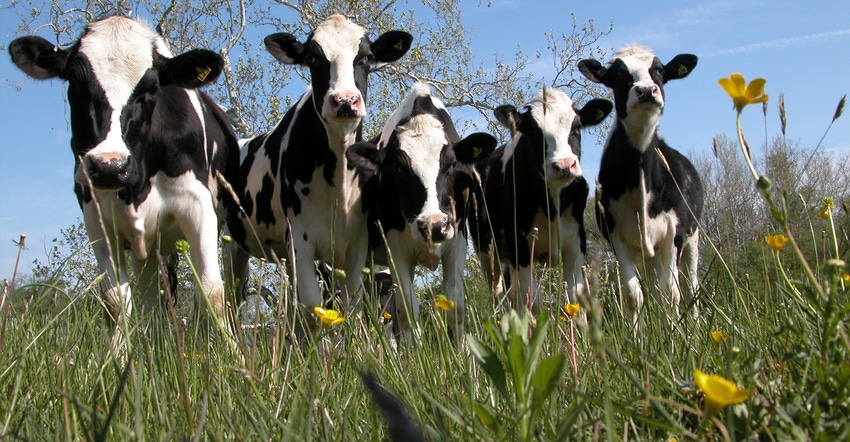January 16, 2018

Pastures, too, can benefit from the huge research investment and focus on soil health. As the saying goes, “If you build it, they will come.” If you make sure soil microbes are fed, they’ll do the work of soil health and fertility for you.
A new 16-page Building Healthy Pasture Soils publication by the National Center for Appropriate Technology Program digs into regenerative soil management, cover crops, grazing, sustainable pasture fertility and how to keep it simple. The downloadable PDF copy, a helpful reference for improving pasture soil health and productivity, is free. Here’re a few pointers from NCAT Grazing Specialist Lee Rinehart to graze on:
Cover crops and grazing
With livestock and cover crops in combination, you’ve got all the tools needed to build soil health. By putting animals on cover crops, you can develop a more resilient soil ecosystem. Think of livestock as biological “roller-crimpers” or cover crop terminators.
Below-ground effects of grazing on root exudates, combined with your animals’ biological contributions, far exceed benefits of cover crops alone. How’s that? Microbes in animal rumens are similar to the soil’s microbes. Animals prime the soil with biological life and contribute to its health.
Cover crops — barley, oats, rye, triticale and wheat — provide high-quality forages for grazing. Cover crop mixes can provide excellent gains and milk production.
Annual ryegrass, which germinates easily, provides lots of biomass, and is especially good in a mix with clovers. Adding crimson clovers, arrowleaf clovers, berseem clovers, sweet clovers, hairy vetch, birdsfoot trefoil or field peas provides protein plus contributes nitrogen to the soil. Alfalfa, in a multiyear treatment, also works well. It’s deep-rooted and persistent for several years.
Other cover crop species to consider are phacelia, mustard, turnip, kale, radish, rape, turnips and yellow mustard. These are scavengers of nitrogen, and the Daikon-type radish is a good subsoiler.
For summer, consider forage soybean, sorghum sudan, buckwheat, velvet bean (especially good with sorghum sudan), pearl millet, chicory and sunflower.
Even if you have a predominately cash-crop-oriented income, it may be attractive to graze rotated cover crops — and produce cash crops. Annual crops can be rotated to perennial pasture every few years. You can also incorporate grazing of cover crops in a strictly cash-crop system. Take a look at Gabe Brown’s cover crops for grazing talk on YouTube.
Keep it simple
Start, perhaps with just one practice, such as a cover crop on a small parcel. Then build on that success.
Remember, your soil needs adequate organic matter — upwards of 4% — to be able to cycle nutrients.
Expect unforeseen outcomes to arise. You’re farming a biological system.
Have a financial reserve to see you through the first few years. This will help your cash flow during the transition.
It took decades for pasture soils to be degenerated, so expect several years for your farm to transition. Don’t expect to reverse the tide in one year. And, as you transition, keep in mind the following concepts:
• When you feed soil microbes, you feed the plant.
• The soil carbon pathway is the mechanism for nutrient transfer, and the process is kept strong by adding organic matter.
• Reduce off-farm inputs to reduce cost.
• Transition slowly and have integrity in believing it’ll work by staying the course even if the system seems to crash.
• If your soil is low in carbon, don’t expect the system to work. To fix it, start by putting in one or two years of cover crops and graze it appropriately to get the system primed. You might be surprised by the results in five years.
Source: NCAT
You May Also Like




